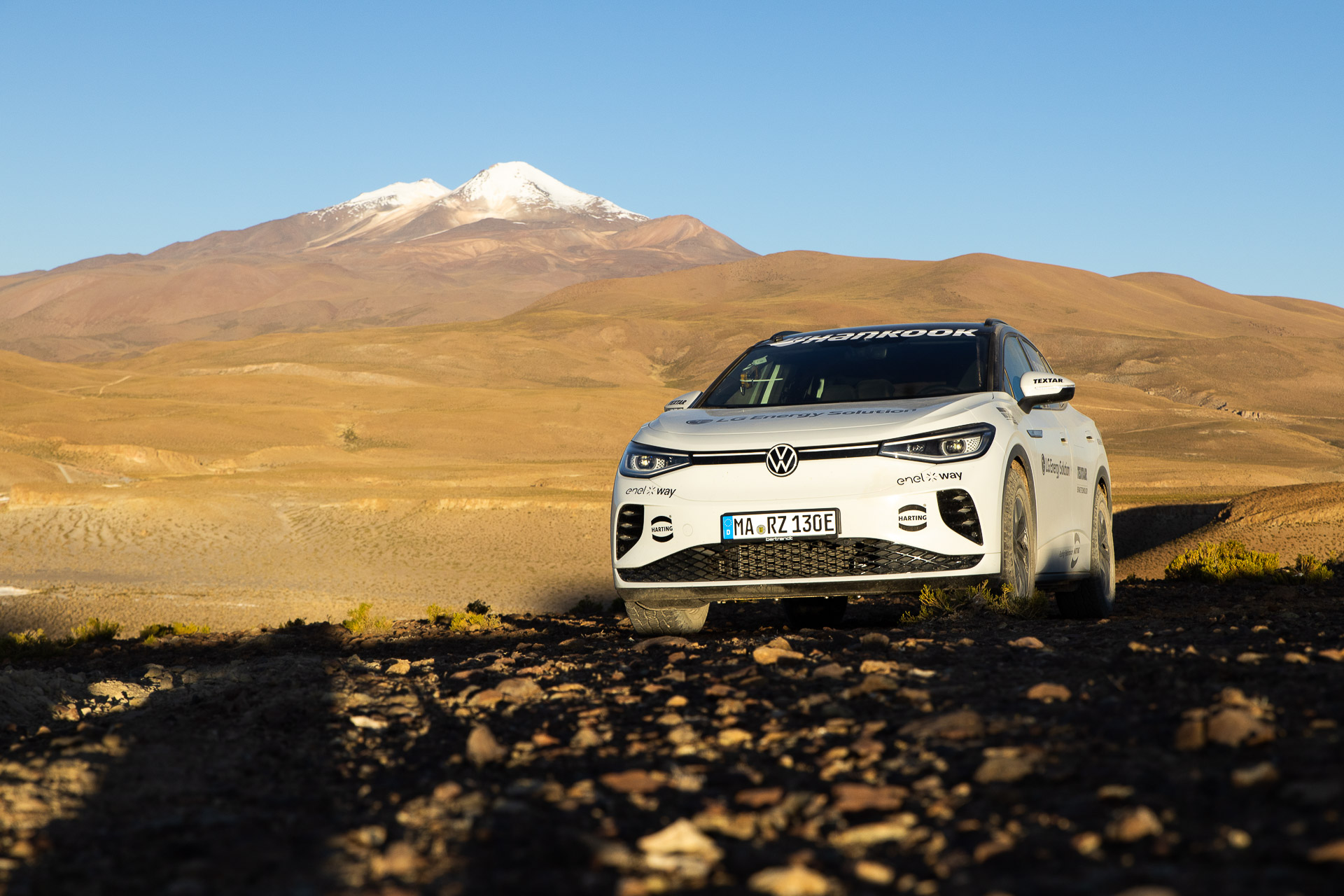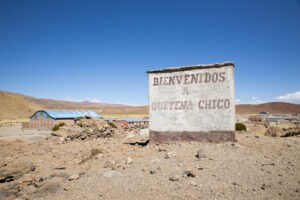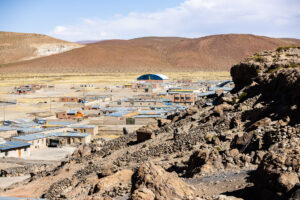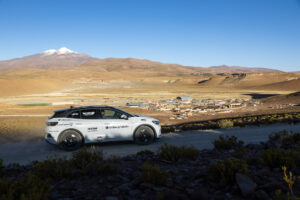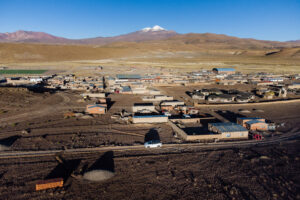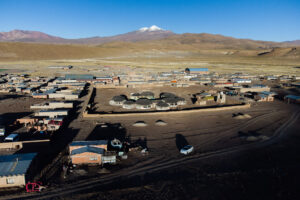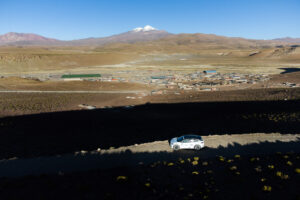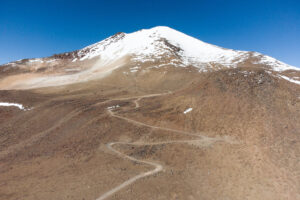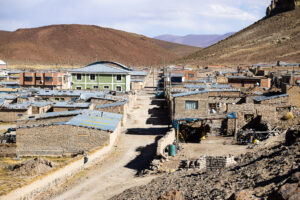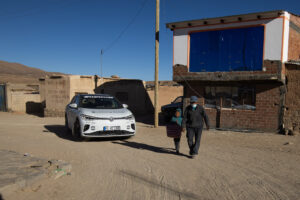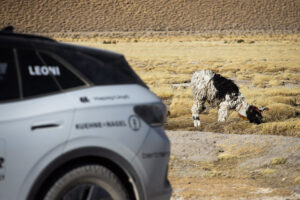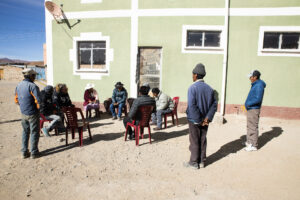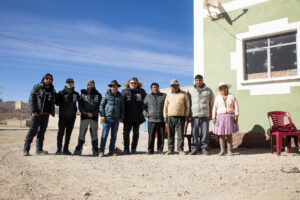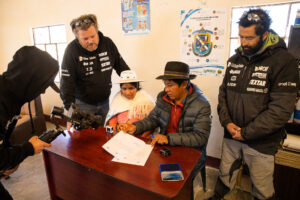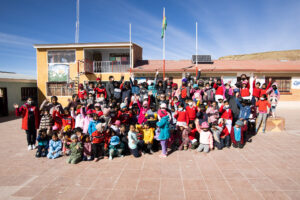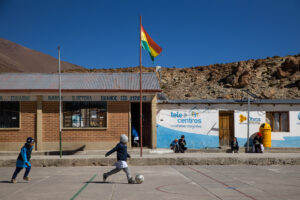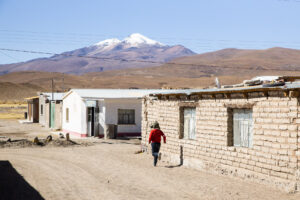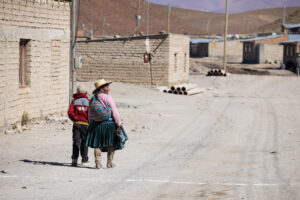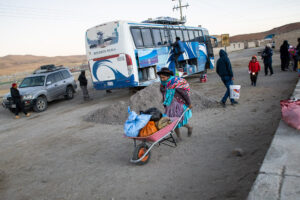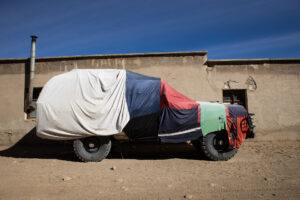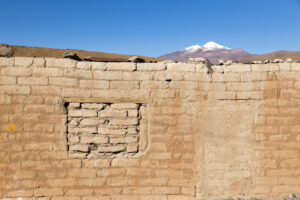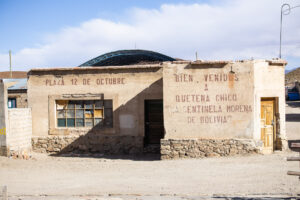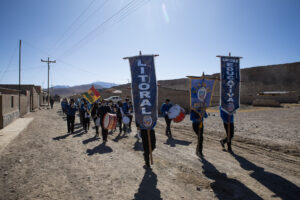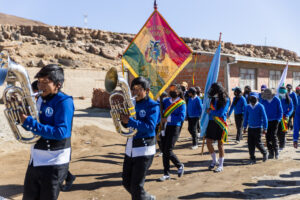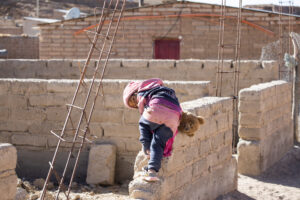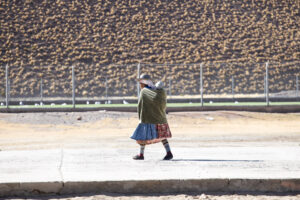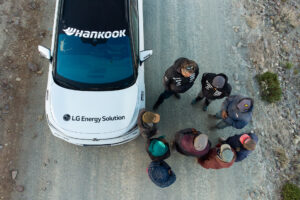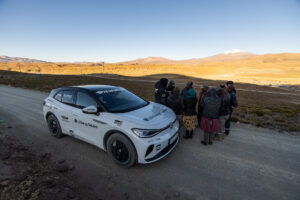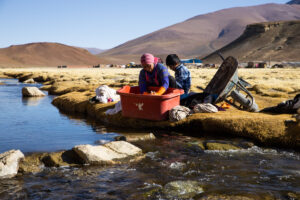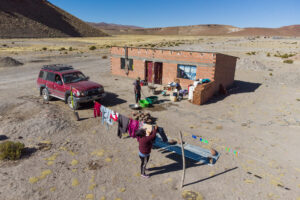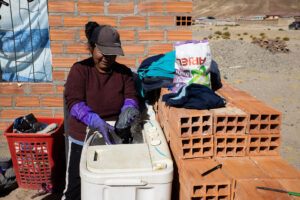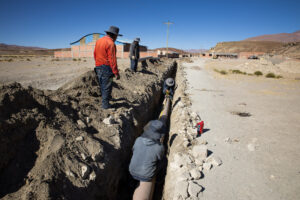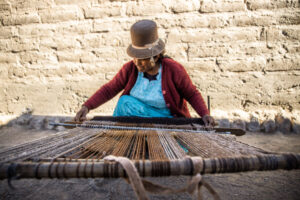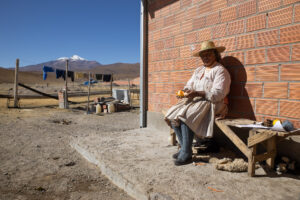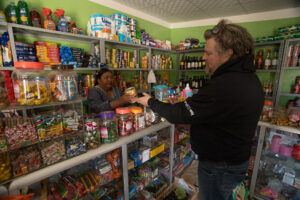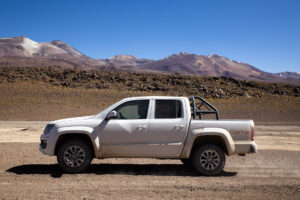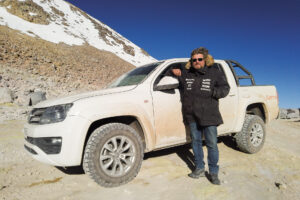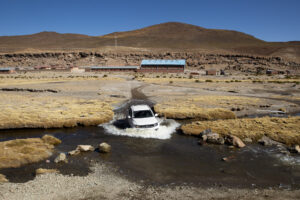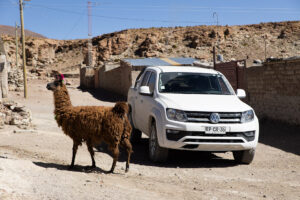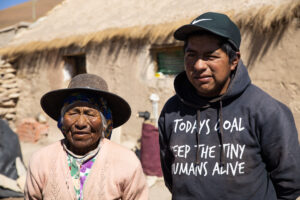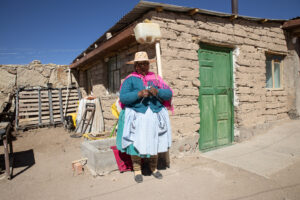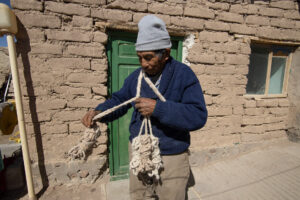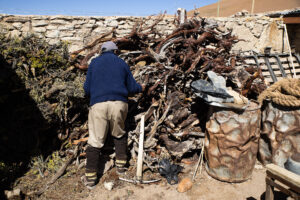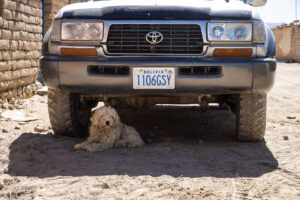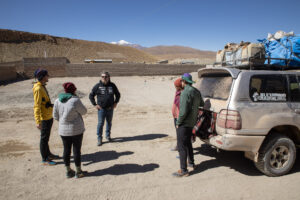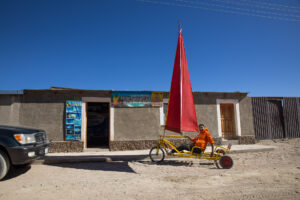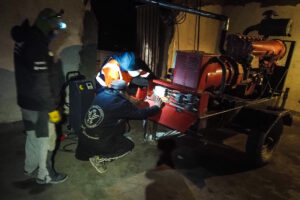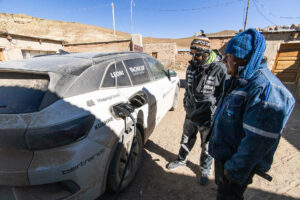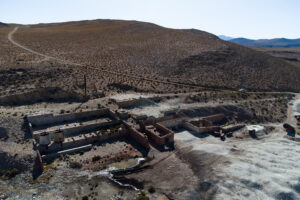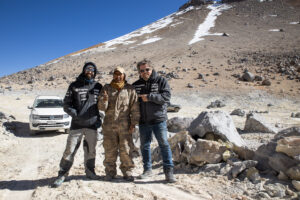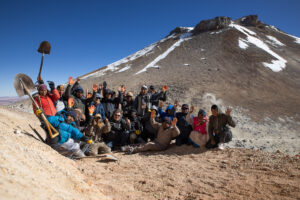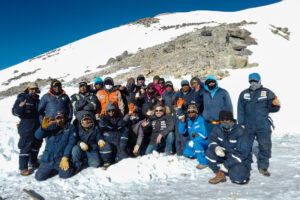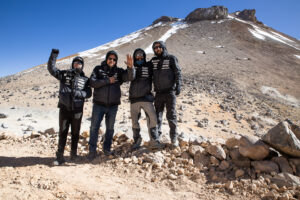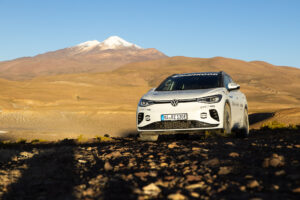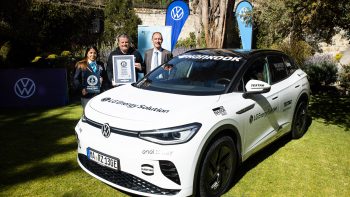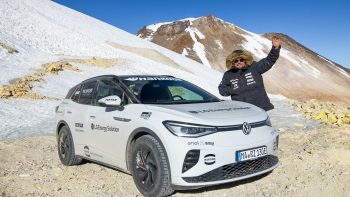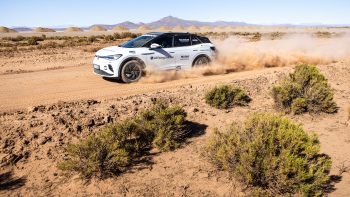Quetena chico welcomes us with extreme temperatures ranging from -15°c at night to almost 30°c during the day and an altitude of 4,150 metres above sea level. Little by little we get used to this village that receives its name for being a grazing place for the llamas, which we can see all the time wandering between the houses and streets of the village. This animal of the camelidae family is a fundamental part of life in the altiplano, as it provides wool for clothing and handicrafts, as well as meat for its inhabitants, as each family has its own livestock.
In the distance you can see the volcano Uturuncu with its 6.030 metres above sea level, dominating the landscape of the village. This is the site of an old sulphur mine that used to operate at an altitude of 5,800 metres and there are still people who worked there. At the foot of the volcano was the miners’ camp and ore processing plant, this place is known as Saibor.
The path that leads almost to the summit of the volcano is maintained by the current inhabitants, who work as local mountain guides.
Quetena is the last town in the south of Bolivia and therefore acts as a border town, and for this reason there is a military centre in the middle of the town which is dedicated to guarding the borders with Chile and Argentina.
During these days we met with the local authorities to present the project and to ask for the authorisation of the project, which they accepted with great enthusiasm. We are taken on a tour of the unpaved streets, the school and some typical highland families. We are struck by the extreme living conditions in this place where they have to protect even the vehicles outside.
Our local guide Robert accompanies us during our stay giving us all the necessary information to prepare the objective, likewise his wife Irma takes care of our food, where we have the opportunity to taste every day typical food like llama meat, quinoa, sweet potatoes and potatoes of the sector.
The village of Quetena has around 1,200 inhabitants, which lives entirely from tourism and was therefore very affected by the pandemic. Since the 1st of May, the borders have been reopened and the number of tourists who pass through here for the night has been increasing daily, and some of them dare to climb the Uturuncu volcano, bringing in foreign currency for the community.
Once a week a bus arrives from Uyuni, bringing food for the villagers and to supply the local mini-market, which in a small space has everything necessary for life in the highlands, from food to hardware. Electricity is provided by an electric generator that only works for a few hours a day, from 09.00 to 14.00 hrs and at night from 18.00 to 23.00 hrs. Even so, the stability of the service is very intermittent, as due to the cold and the fuel supply there are nights when it does not work, so we have to organise the charging of the VW ID4 well in advance in order not to have any inconvenience. In any case, they kindly help us to do the charging with the generator of the village.
We cannot forget the support of our VW Amarok van provided by GAMA in Chile, with which we climb daily to test the road while the villagers maintain it, opening tracks in areas with up to 3 metres of snow. Refuelling is not easy as there is no petrol station in Quetena and we have to buy diesel oil from the villagers who bring it in jerry cans from Uyuni on a weekly basis.
Washing clothes, something so common and simple, is very different here. Since we arrived they are fixing the pipes and the water is cut off all day long, so many people have to wash in the river and the washing machines only work when there is electricity in the village.

